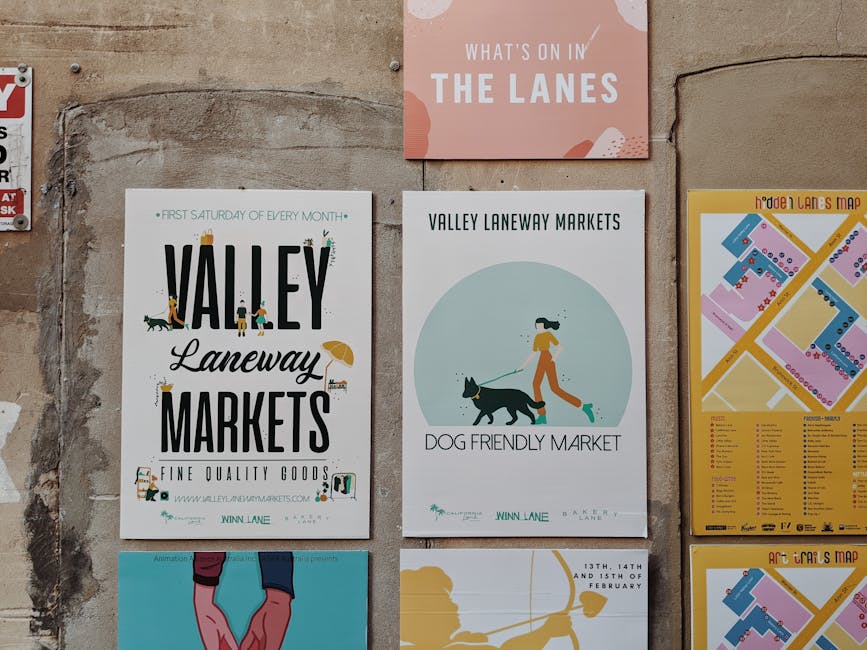Okay, so listen, if you’re out there running a business, or even just thinking about getting one going, and you’ve heard whispers about “Google Ads PPC” and it just sounds like a bunch of complicated mumbo jumbo, you’re absolutely not by yourself. A whole lot of people feel that way, it’s understandable, and honestly, the world of online advertising can seem a bit much at times, you know, with all the different things happening and terms flying around. But here’s the deal, like, in 2025, this whole Google Ads PPC thing? It’s still pretty much a big deal, maybe even bigger than before for a bunch of companies trying to get noticed online. It’s essentially how a bunch of businesses manage to show up right there on Google when you’re looking for stuff, and they only pay up when someone, well, clicks on their ad. It’s a pretty clever arrangement, when you stop and think about it, making sure you’re only putting your money out there for actual interest, which is a nice touch for a lot of budgets. You might also hear people call it “pay-per-click” advertising, or sometimes just PPC, and that’s exactly what we’re chatting about here today. It’s really just a way to get eyeballs on what you’re selling or saying, without necessarily spending a fortune upfront, because you’re connected right to people who are already looking for something similar to what you have going on. It’s a kind of advertising that has, over the years, just sort of settled in as a standard way businesses get their messages seen, a big part of what makes the internet go round for commerce.
It’s been around for quite a while, this concept of paying for clicks, but Google Ads has just kept growing and changing, getting smarter year after year, so even if you thought you knew it, there’s always something new to pick up. For instance, what worked five years ago might not exactly be the trick today, because the systems, they’re always learning and shifting. Imagine you’re trying to sell really comfy garden chairs; you wouldn’t want your ad showing up for someone looking for, like, car parts, right? So, Google Ads tries to be really good at matching your comfy chairs to people searching for “outdoor seating” or “patio furniture comfy” and things in that ballpark. It’s pretty important to get a handle on this, especially now, because more and more folks are just doing all their searching online for, well, everything. So, if your business isn’t showing up when they’re searching, it’s a bit like having a shop with the lights off, really, nobody’s going to know you’re even there. And that’s not what we want for anyone who’s trying to make a living and serve customers. This is generally why people spend some time to actually get to grips with what Google Ads PPC actually means for them and their little corner of the market.
How Google Ads PPC Actually Works: The Auction and All That
So, how does this whole thing with Google Ads PPC actually operate, you might be asking? Well, at its core, it’s pretty simple but also a bit intricate, it’s a bit of both. You, as a business owner, you go and create some ads – little bits of text, maybe some pictures, sometimes even videos – that tell people about what you offer. Then, you choose specific words or phrases, these are called keywords, which people are normally typing into Google when they’re looking for something that relates to your business. For instance, if you sell fancy dog treats, your keywords might be “gourmet dog biscuits,” or “healthy puppy snacks.”
Now, here’s where it gets interesting, the “PPC” part, that stands for “Pay-Per-Click.” What this means is, you normally don’t pay just for your ad to be shown. Oh no, that’s not how it rolls. You only pay Google when someone actually, you know, clicks on your ad. So, if your ad shows up a hundred times, but only ten people click it, you’re just paying for those ten clicks, which is kind of a neat arrangement for controlling your budget. It’s not like old-school newspaper ads where you pay for the space whether anyone looks at it or not. This is way more targeted.
And then there’s the auction. It’s not like a shouting match in a big room, though sometimes it can feel like it. Every single time someone searches for one of your keywords, Google runs a super-fast, completely automatic auction. Lots of businesses might be bidding on the same keywords as you. Google decides whose ad gets shown, and where it gets shown, based on a couple of things. One big thing is how much you’re willing to pay per click, that’s your bid. But, and this is a really important thing to grasp, it’s not just about who bids the most money, which is good for smaller businesses. Google also looks at how, like, “good” your ad is. How relevant is it to what the person searched for? How good is the page they land on after they click? This “goodness” factor, sometimes called Quality Score, can actually help a lower bid beat a higher one if your ad and landing page are just a better match for the user’s search. This means you need to put a little thought into making sure your ads are well-made and useful, not just throwing money at it. That’s generally how the whole thing starts to get a little bit more complex than just putting up a billboard.
Different Kinds of Google Ads: More Than Just Search Results
When people usually talk about Google Ads, what normally pops into their heads are those text ads you see right at the top of the Google search results page. You know, the ones that say “Ad” right next to them. And yeah, those are a really, really big part of it, probably the most common type. But honestly, the system is a much, much bigger thing than just that one kind of ad. There’s a whole bunch of ways your messages can appear, and it’s quite varied really.
First off, yes, those Search Ads are where a lot of people begin. These are the text-only ads that show up when someone types something into Google. They’re trying to find something specific, and your ad pops up because it directly matches what they’re looking for. It’s a very direct way to get in front of people who already know, sort of, what they want.
Then, there are Display Ads. These are those banner ads, you know, the ones with pictures or even animations, that you see when you’re browsing different websites online. Maybe you’re reading a blog about baking, and suddenly an ad for a new mixer shows up. That’s a Display Ad. Google has a vast network of websites, apps, and even YouTube where these ads can appear. They’re not usually for people actively searching for something specific right then and there; instead, they’re more about getting your brand seen, building up some awareness, or maybe reminding people about something they looked at before, but didn’t buy.
And speaking of YouTube, there are Video Ads too! If you spend any time watching videos there, you’ve definitely seen them. These can be short ads that play before, during, or after a video. Some you can skip, some you can’t, for a few seconds anyway. These are quite impactful, you know, because video just tends to grab people’s attention in a different way than plain text or even a static image. For businesses with visual products or services, like a travel company showing off beautiful destinations, these can work really well.
There’s also Shopping Ads, which are super neat for businesses selling actual things. When you search for “new running shoes,” Google will often show you pictures of shoes, prices, and who sells them, right there in the search results. These are usually at the top or on the side, and they look like product listings from a store. They’re great because people see exactly what’s on offer, and they usually only click if they’re pretty serious about buying.
Lastly, there are App Ads. If you’ve got a mobile app you want people to download, Google can help you get it in front of people who are likely to download it. These ads can show up on the Google Play Store, in other apps, on YouTube, or in search results, generally trying to get people to install your app. So, as you can probably tell, it’s not just one thing, it’s a whole toolbox of ways to reach people, depending on what you’re selling and who you’re trying to talk to.
Why Bother with Google Ads PPC for Your Business, Like Now?
You might be thinking, “Alright, I sort of get what Google Ads PPC is, but why should I actually care about it for my business, especially with all the other stuff going on?” That’s a fair question, and there are some pretty solid reasons why lots of companies, big and small, put their attention into this. It’s considered to be one of the more direct ways to get specific results, if you do it somewhat correctly.
First off, it’s about being seen right away, which is a big deal. Imagine you’ve just started a new coffee shop. When someone searches for “best coffee near me,” you want to pop up at the top, right? Organic search results, the non-paid ones, take a lot of time and effort to get up there. With Google Ads, you can basically pay your way to the top of the search results almost instantly. It’s a fast track to visibility, which for a lot of businesses is just a game-changer when you’re trying to get a foothold. You can start getting people through your virtual or physical door pretty quickly.
Secondly, it’s really targeted, like, super targeted. You’re not just throwing an ad out into the general public hoping someone cares. With Google Ads, you can aim your ads at people based on what they’re searching for, where they live, what websites they visit, even their interests. If you sell specialized gear for rock climbing, you can make sure your ads only show up for people searching for “rock climbing equipment” or who seem interested in outdoor sports. This means your money is going towards people who are genuinely more likely to be interested in what you have, which is a pretty good return for your spending. It’s like fishing in a specific pond where you know your type of fish hang out.
Another pretty significant point is that it’s quite measurable. Unlike a billboard or a radio ad where you kind of guess how well it worked, with Google Ads, you can see almost everything. You know how many people saw your ad, how many clicked it, how much each click cost you, and if those clicks led to a sale or a phone call. This means you can keep tweaking things, changing your ads, adjusting your bids, until you get it just right, and it’s working as well as it can. It’s not a guessing game; it’s more like a science experiment where you’re constantly making things a bit better.
Also, it can be really flexible with your budget. You don’t have to spend a million dollars to get started. You can set a daily budget, say, twenty bucks a day, and Google won’t spend more than that. This means small businesses can compete with bigger ones, at least on a smaller scale, which is quite nice, because it lets everyone have a shot. And if something’s not working, you can just pause it or stop it altogether. You’re generally in charge of how much money goes out, which is a big relief for most people. So, really, for getting seen, getting specific about who sees you, knowing what’s happening, and controlling your cash, Google Ads PPC is still very much a go-to thing for businesses in 2025, and that’s not really going to change overnight, it is thought.
Making Your Google Ads PPC Work: Some Basic Ideas
Alright, so you’re perhaps convinced that Google Ads PPC is something you should look into. But how do you actually make it work for you? It’s not just a “set it and forget it” kind of thing, which a lot of people often wish it was, but it’s not. There are definitely some basic things you generally need to keep in mind, kind of like rules of thumb, to not just waste your money and get some actual good results from it all.
First off, your keywords really, really matter. This is arguably the starting point for everything. Don’t just pick super broad terms. If you sell handmade leather wallets, don’t just pick “wallets.” Think about what someone who really wants your kind of wallet would type. Maybe “artisanal leather wallet,” or “handmade slim wallet.” These “long-tail” keywords, as they are often called, might get fewer searches, but the people searching for them are usually much closer to making a purchase. They know what they want. So, picking good keywords, and also picking negative keywords (words you don’t want your ads to show up for, like “free wallets” if you don’t give them away), is a fairly big deal.
Then, you gotta make sure your ads themselves are good. This sounds obvious, but you’d be surprised. Your ad copy – the actual words in your ad – should be clear, catchy, and tell people exactly what they’re getting if they click. It needs to speak to the person who searched for those keywords. If someone typed “durable hiking boots,” your ad should mention “durable” and “hiking boots” in some way. And also, give them a reason to choose you! Maybe “Free shipping,” or “20% Off This Week.” Give them a little push, you know.
And don’t forget where people land after they click. This is called your landing page. If your ad promises the world, but the page they get to is just a messy, slow, or irrelevant page, people are just going to bounce right off. The landing page needs to be a direct continuation of your ad. If your ad is for “red sparkly shoes,” the landing page needs to be exactly about red sparkly shoes, not your entire shoe collection. It should be easy to navigate, load quickly, and generally help them do what you want them to do, like buy the shoes or fill out a form. A bad landing page can waste all the money you spend on clicks, which is a pretty common mistake a lot of people make, sadly.
Finally, and this is quite an important one, you have to keep an eye on things and make changes. It’s not something you set up once and then forget about it forever. The digital world changes fast, people’s searching habits shift, and your competitors might change what they’re doing. You need to regularly check how your ads are performing. Are you getting clicks? Are those clicks turning into sales or leads? Are some keywords costing too much for too little return? You typically need to pause underperforming ads, adjust bids, try new ad variations, and generally just keep trying to make things better. It’s a bit of an ongoing process, but that’s where you can really start to see the improvements and get your money to work harder for you. Without checking in, it’s hard to know if what you’re doing is actually working, or just sort of floating along.
FAQ: What is Google Ads PPC?
Q1: What exactly does “PPC” mean when we talk about Google Ads?
A: “PPC” simply stands for “Pay-Per-Click.” What that means for you is, with Google Ads, you don’t pay just for your ad to be shown to people. No, you only get charged by Google when someone actually takes the step and clicks on your ad. It’s a way to make sure your money goes towards real interest in what you’re offering.
Q2: Is Google Ads PPC just for big companies with a lot of money?
A: Not at all, actually! That’s a common misunderstanding. Google Ads PPC can work for businesses of just about any size. You get to set your own daily or monthly budget, and Google makes sure it doesn’t spend more than you tell it to. So, even a small local shop can start with a modest budget and still get seen by potential customers right in their area.
Q3: How quickly can I start seeing results from Google Ads PPC?
A: One of the nice things about Google Ads PPC, generally, is that it can give you pretty fast results. Once your ads are approved and running, which often happens quite quickly, you can start getting clicks and visits to your website almost right away. Compared to something like search engine stuff that takes ages to build up, this is a much faster way to get noticed.
Q4: Do I need a website to use Google Ads PPC?
A: For most types of Google Ads PPC, yes, you normally do need a website or at least a specific landing page where people can go after they click your ad. That’s where they learn more about your stuff, or where they can buy something. Some ad types, like App Ads for example, might direct straight to an app store, but usually, a good working website is pretty important for making the whole thing effective.
Q5: What’s the main point of Google Ads PPC for a business?
A: The big idea behind Google Ads PPC is to connect your business with people who are actively looking for things related to what you sell or offer, right at the moment they’re searching. It’s about getting noticed by the right folks, at the right time, making sure your messages get to those who are most likely to care, and only paying when they show a clear interest by clicking. It helps bring targeted traffic to your business quite efficiently, for a lot of people.










